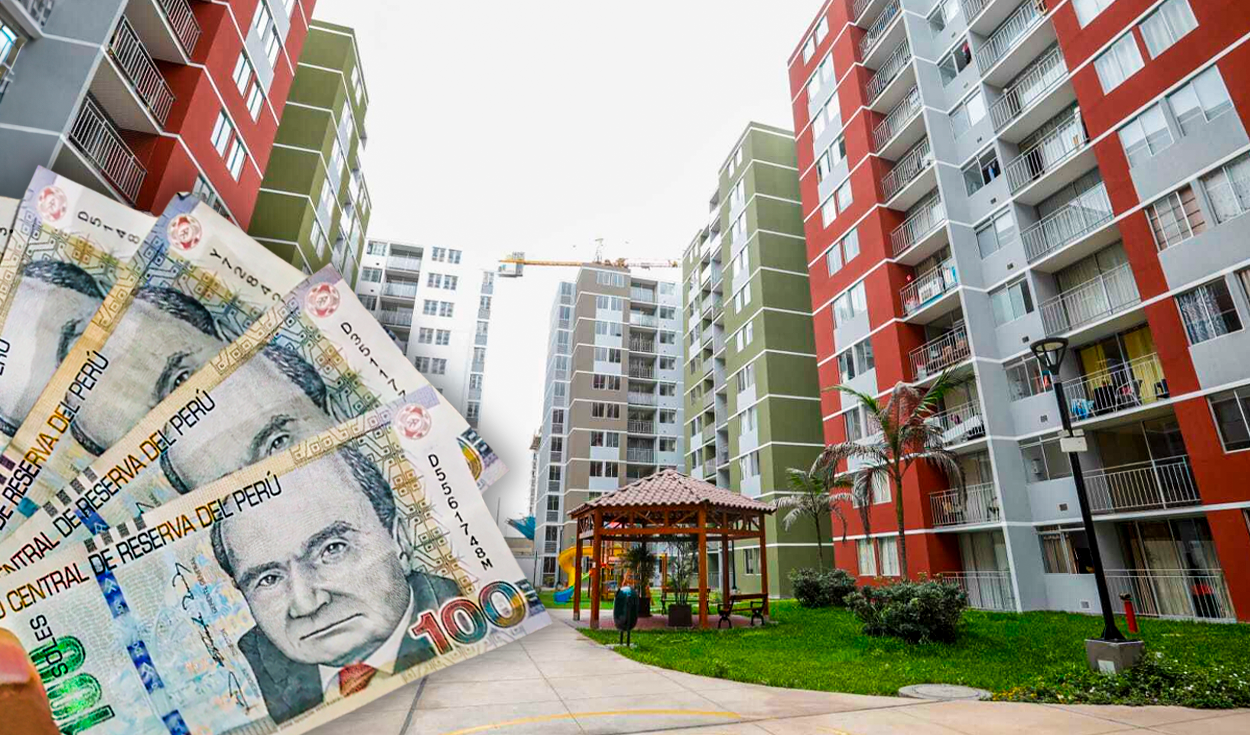
The dream of owning your own home represents one of the greatest goals for many people. A space where you can live and materialize your desires and reside with your family. However, with the real estate boom and the current costs of housing in relation to the minimum vital remunerationthis goal seems increasingly distant.
In order to know if there is a feasible method of making this desire a reality by earning the minimum wage in Peru, we turned to Jorge Carrillo Acostaa finance expert from Pacífico Business School, who answered this question.
If I earn a minimum wage, how can I buy an apartment?
“A good alternative to get an apartment earning a minimum wage is through a mortgage loan, exactly, from the Techo Propio program, which can finance a home of up to S/128,000 by granting you a bonus from the State of S/44,805 However, the person who wants to obtain the home would have to put down an initial payment of 10% of the value, or around S/12,800,” indicates the specialist.
How to save for the start of an apartment if I earn minimum wage?
Now, the question is how to save these S/12,000 for the down payment on my home if I earn the minimum wage? To be able to reach those S/12,000 first, someone who earns the minimum wage could save S/180 per month, which is more or less 17% of the minimum vital remuneration in our country. That monthly amount for five years at an annual savings account rate of 5% — which today pays up to 7% — could reach S/12,000. Even less, if you save S/177 for 5 years at that 5% annual rate, it could reach S/12,000 for the initial payment, which would be added to the S/44,805 of the State bond. Then, it would subtract around S/63,195 to reach S/120,000. If that amount is financed at an 11% rate, the fee would be around S/600, which for the minimum wage represents 60%, which is disproportionate.
Another better option is to start saving with the minimum wage, aiming to reach the initial payment and within a period of 5 years you will no longer earn the minimum, but can earn approximately S/2,000, with which paying S/600 becomes much more manageable, since it would represent 30% of the salary – a quite reasonable amount – and it is precisely between 30 and 40% what is usually paid.
What steps should I take to save and what is the ideal amount?
It is advisable to save to have an emergency fund such as an unforeseen event, for example, accidents, illness, loss of employment, etc. Likewise, the teacher Jorge Carrillo Acosta recommends saving “at least 10% of your monthly income, until you accumulate at least 3 salaries”.
Recommendations to save
- Pay yourself. See savings as an obligation in your monthly budget. Set an amount and make the payment with love.
- Don’t save what you have left after spending, but spend what you have left after saving. That is, save first, and then spend.
- Set a goal that you want to achieve, and give it a name (laptop, wedding, trip, car, studies, etc.). This will motivate you and help you save, and allow you to plan your dreams.
- Build the habit little by little. Start by setting aside small amounts each month. The habit of saving is achieved little by little. The important thing is to start.
- Saving at home is a greater temptation. By saving in the piggy bank or in hidden places, you are more tempted to spend it. It is better to have it in a financial institution, which even generates interest.
- Be careful with saving in unregulated financial institutions. If you go to them, analyze the risks of leaving your savings. Find out who is authorized by the SBS to capture savings at the following link: https://www.sbs.gob.pe/usuarios/informacion-financiera/relacion-de-entidades-autorizados-a-captar-depositos-en-cada-region
Source: Larepublica
Alia is a professional author and journalist, working at 247 news agency. She writes on various topics from economy news to general interest pieces, providing readers with relevant and informative content. With years of experience, she brings a unique perspective and in-depth analysis to her work.












